Measurement of a 3D Ultrasonic Wavefield Using Pulsed Laser Holographic Microscopy for Ultrasonic Nondestructive Evaluation
Abstract
:1. Introduction
2. Measurement of 3D Ultrasonic Wavefields Using Digital Holographic Interferometry
2.1. Theory of Digital Holographic Interferometry
2.2. Measurement of 3D Ultrasonic Wavefields
3. Design of 3D Ultrasonic Wavefields Measurement System
4. Simulation Study
4.1. Simulation of Interferograms of Ultrasonic Wavefield
4.2. Phase Unwrapping in Measurement of 3D Ultrasonic Wavefields
5. Experimental Results
6. Conclusions
Acknowledgements
Author Contributions
Conflicts of Interest
References
- Huang, S.; Zhang, Y.; Wang, S.; Zhao, W. Multi-mode electromagnetic ultrasonic lamb wave tomography imaging for variable-depth defects in metal plates. Sensors 2016, 16, 628. [Google Scholar] [CrossRef] [PubMed]
- Zhang, R.; Zhang, W.; He, C.; Zhang, Y.; Song, J.; Xue, C. Underwater Imaging Using a 1 × 16 CMUT Linear Array. Sensors 2016, 16, 312. [Google Scholar] [CrossRef] [PubMed]
- Shih, J.L.; Wu, K.T.; Jen, C.K.; Chiu, C.H.; Tzeng, J.C.; Liaw, J.W. Applications of flexible ultrasonic transducer array for defect detection at 150 °C. Sensors 2013, 13, 975–983. [Google Scholar] [CrossRef] [PubMed]
- Del Castillo, H.; De La Fuente, B.; Barcenilla, V.; López, P.; Fernández, F. Check valve diagnosis by sectorial scanning phased array ultrasonic technique. In Proceedings of the 19th World Conference on Non-Destructive Testing (WCNDT 2016), Munich, Germany, 13–17 June 2016. [Google Scholar]
- Bulavinov, A.; Joneit, D.; Kröning, M.; Bernus, L.; Dalichow, M.H.; Reddy, K.M. Sampling Phased Array a New Technique for Signal Processing and Ultrasonic Imaging; ECNDT: Berlin, Germany, 2006. [Google Scholar]
- Han, Z.; Peng, H.; Zhao, X.; Chen, X. 3D Ultrasound Imaging in Frequency Domain Based on Concepts of Array Beam and Synthetic Aperture. Ultrasonics 2017, 84, 254–263. [Google Scholar] [CrossRef] [PubMed]
- Kamizuma, H.; Omori, T.; Hamishoto, K.; Yamaguchi, M. Development of fast-scanning laser probe system based on knife-edge method for diagnosis of RF surface acoustic wave devices. IEEE Trans. Ultrason. Ferroelectr. Freq. Control 2006, 53, 1186–1191. [Google Scholar] [CrossRef] [PubMed]
- Knuuttila, J.V.; Tikka, P.T.; Salomaa, M.M. Scanning Michelson interferometer for imaging surface acoustic wave fields. Opt. Lett. 2000, 25, 613–615. [Google Scholar] [CrossRef] [PubMed]
- Hochreiner, A.; Berer, T.; Grün, H.; Leitner, M.; Burgholzer, P. Photoacoustic imaging using an adaptive interferometer with a photorefractive crystal. J. Biophotonics 2012, 5, 508–517. [Google Scholar] [CrossRef] [PubMed]
- Zhu, Y.K.; Tian, G.Y.; Lu, R.S.; Zhang, H. A review of optical NDT technologies. Sensors 2011, 11, 7773–7798. [Google Scholar] [CrossRef] [PubMed]
- Mast, T.D.; Gordon, G.A. Quantitative flaw reconstruction from ultrasonic surface wavefields measured by electronic speckle pattern interferometry. IEEE Trans. Ultrason. Ferroelectr. Freq. Control 2001, 48, 432–444. [Google Scholar] [CrossRef] [PubMed]
- Yamaguchi, I. Phase-shifting digital holography. In Digital Holography and Three-Dimensional Display; Springer: Boston, MA, USA, 2006; pp. 145–171. [Google Scholar]
- Sun, L.; Yu, Y.; Zhou, W. 3D deformation measurement based on colorful electronic speckle pattern interferometry. Optik-Int. J. Light Electron Opt. 2015, 126, 3998–4003. [Google Scholar] [CrossRef]
- Ishikawa, K.; Yatabe, K.; Chitanont, N.; Ikeda, Y.; Oikawa, Y.; Onuma, T.; Niwa, H.; Yoshii, M. High-speed imaging of sound using parallel phase-shifting interferometry. Opt. Express 2016, 24, 12922–12932. [Google Scholar] [CrossRef] [PubMed]
- Schedin, S. Digital holographic interferometry. J. Hologr. Speckle 2006, 3, 1–17. [Google Scholar] [CrossRef]
- Xu, L.; Peng, X.; Miao, J.; Asundi, A.K. Studies of digital microscopic holography with applications to microstructure testing. Appl. Opt. 2001, 40, 5046–5051. [Google Scholar] [CrossRef] [PubMed]
- Pedrini, G.; Zou, Y.L.; Tiziani, H.J. Digital double-pulsed holographic interferometry for vibration analysis. J. Mod. Opt. 1995, 42, 367–374. [Google Scholar] [CrossRef]
- Pedrini, G.; Osten, W.; Gusev, M.E. High-speed digital holographic interferometry for vibration measurement. Appl. Opt. 2006, 45, 3456–3462. [Google Scholar] [CrossRef] [PubMed]
- Fu, Y.; Pedrini, G.; Osten, W. Vibration measurement by temporal Fourier analyses of a digital hologram sequence. Appl. Opt. 2007, 46, 5719–5727. [Google Scholar] [CrossRef] [PubMed]
- Matoba, O.; Inokuchi, H.; Nitta, K.; Awatsuji, Y. Optical voice recorder by off-axis digital holography. Opt. Lett. 2014, 39, 6549–6552. [Google Scholar] [CrossRef] [PubMed]
- Vandenrijt, J.F.; Georges, M.P. Electronic speckle pattern interferometry and digital holographic interferometry with microbolometer arrays at 10.6 μm. Appl. Opt. 2010, 49, 5067–5075. [Google Scholar] [CrossRef] [PubMed]
- Steinchen, W.; Yang, L. Digital Shearography: Theory and Application of Digital Speckle Pattern Shearing Interferometry; SPIE Press: Bellingham, WA, USA, 2003. [Google Scholar]
- Kreis, T. Handbook of Holographic Interferometry: Optical and Digital Methods; John Wiley & Sons: Hoboken, NJ, USA, 2006. [Google Scholar]
- Mann, C.J.; Kim, M.K. Quantitative phase-contrast microscopy by angular spectrum digital holography. In Proceedings of the SPIE Three-Dimensional and Multidimensional Microscopy: Image Acquisition and Processing XIII, San Jose, CA, USA, 24–26 January 2006. [Google Scholar]
- Abdul-Rahman, H.; Gdeisat, M.; Burton, D.; Lalor, M. Fast three-dimensional phase-unwrapping algorithm based on sorting by reliability following a non-continuous path. In Proceedings of the SPIE Optical Measurement Systems for Industrial Inspection IV, Munich, Germany, 13–17 June 2005; Volume 5856, p. 33. [Google Scholar]


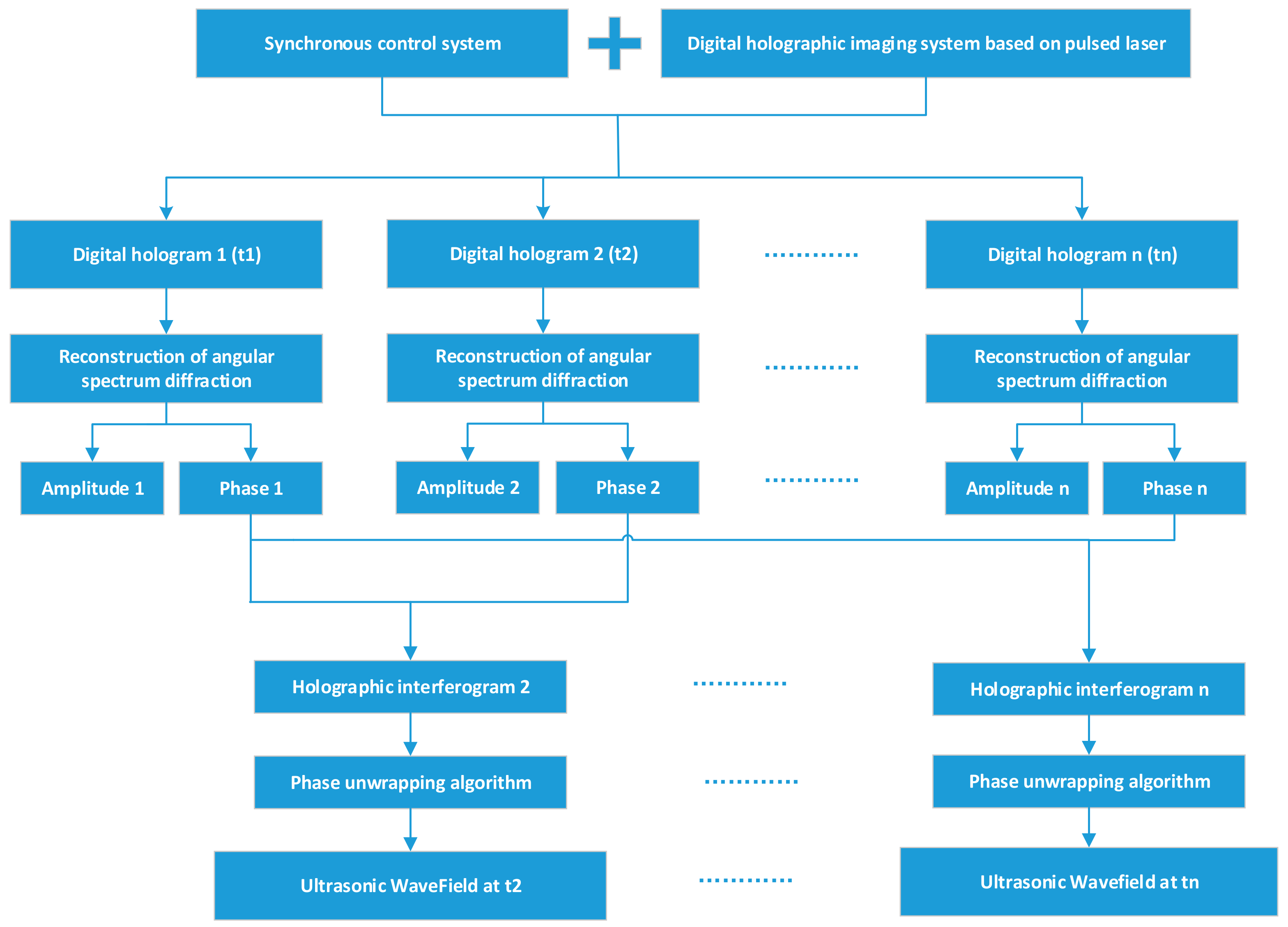
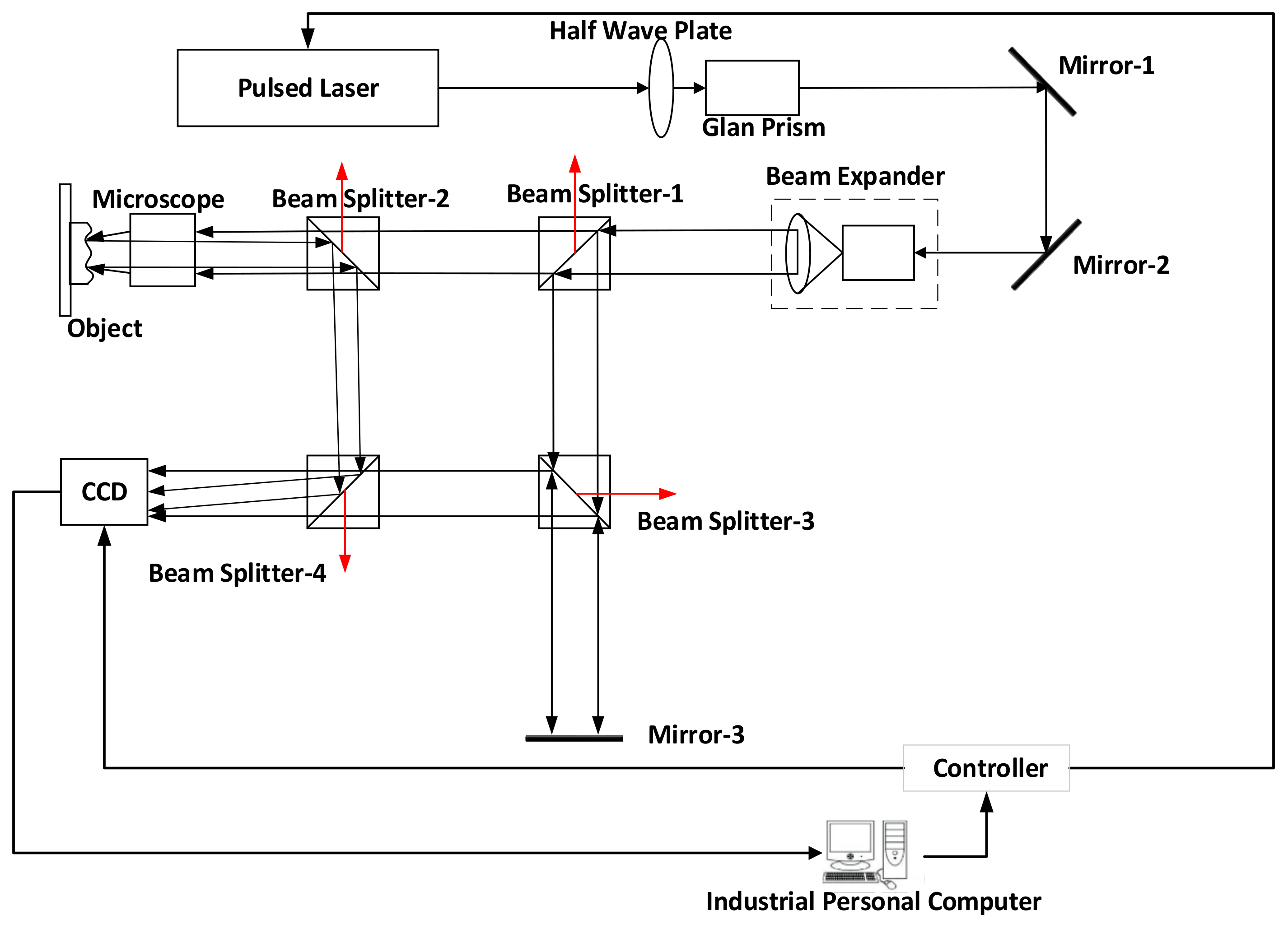
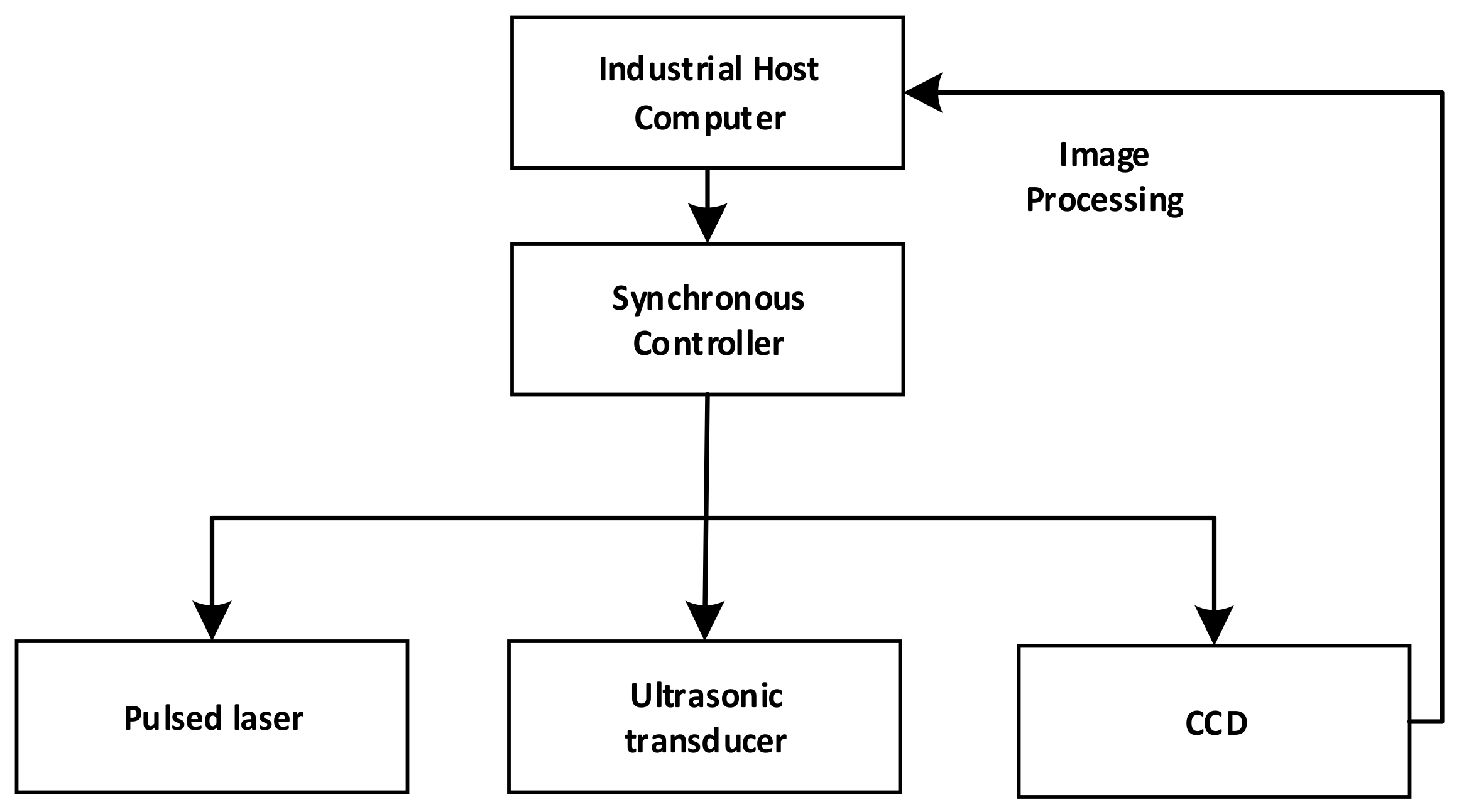
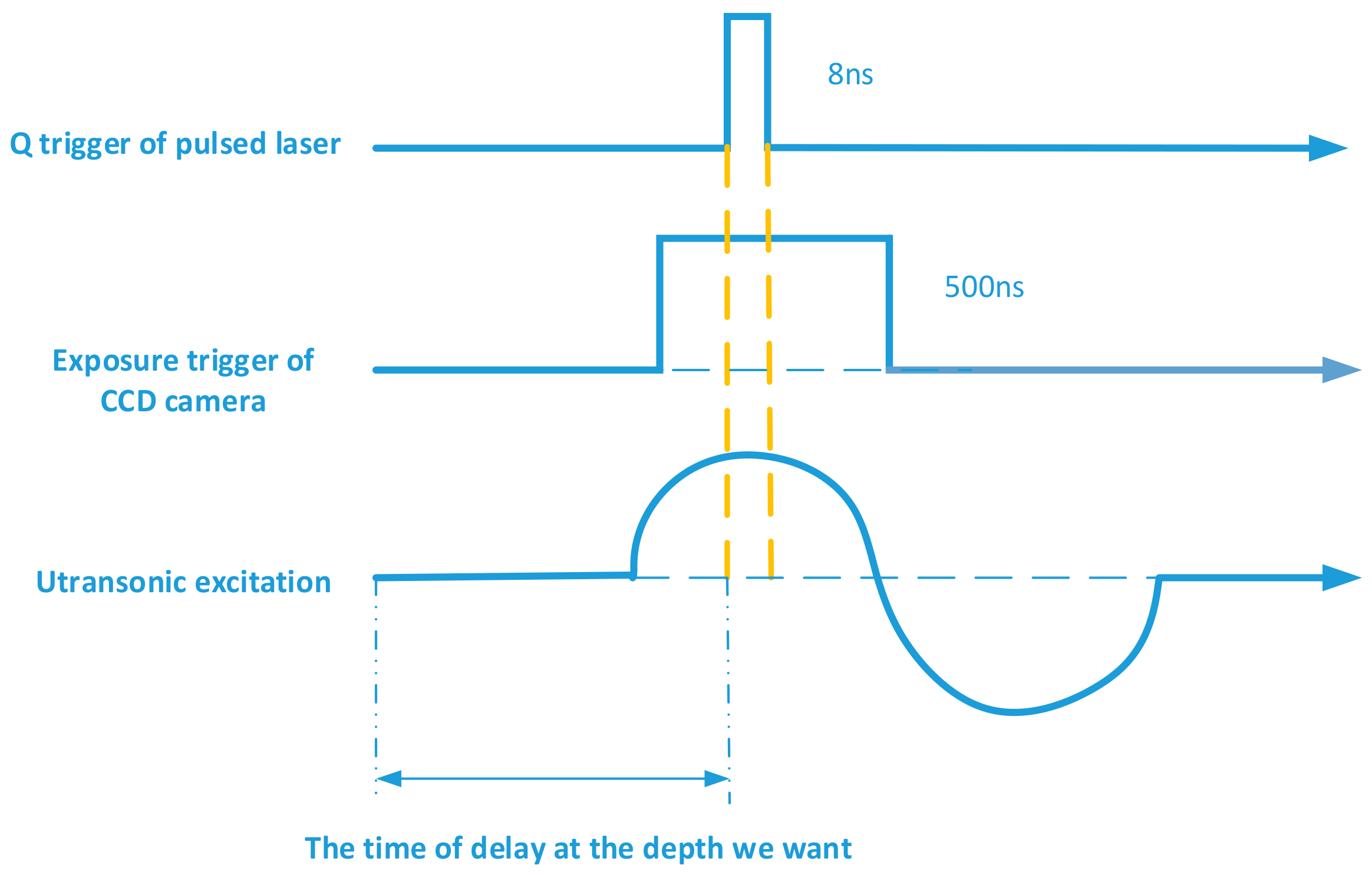

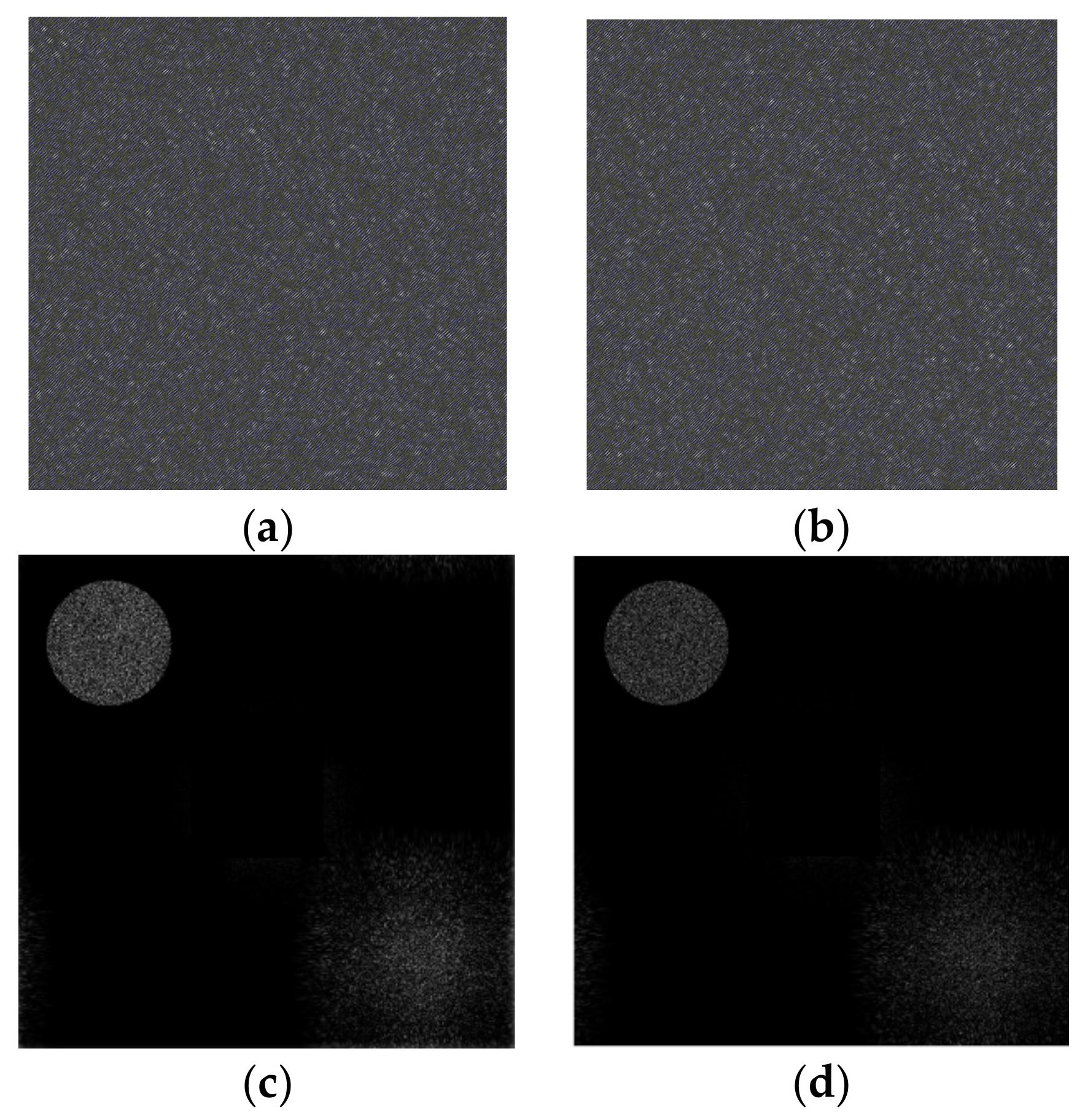


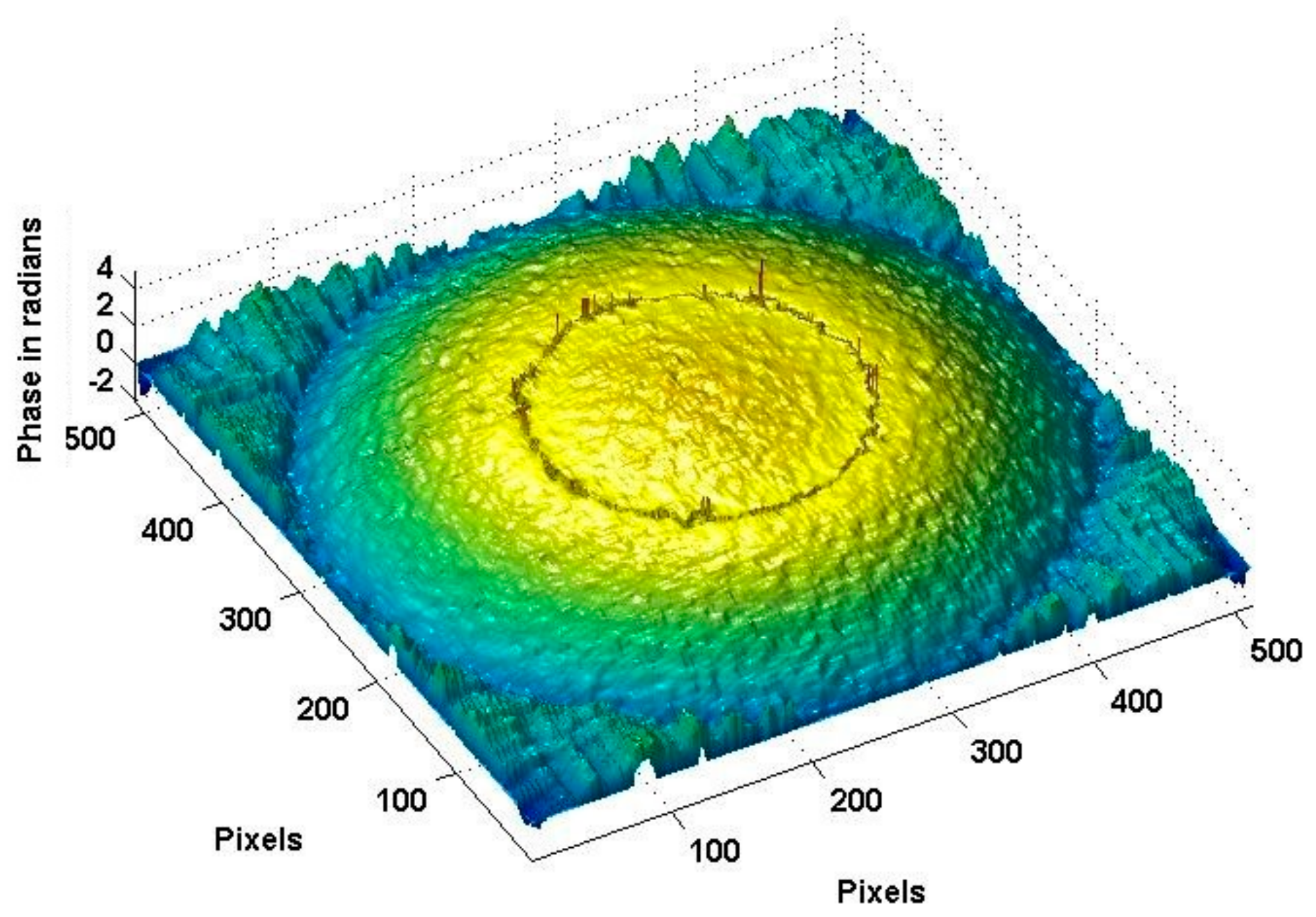
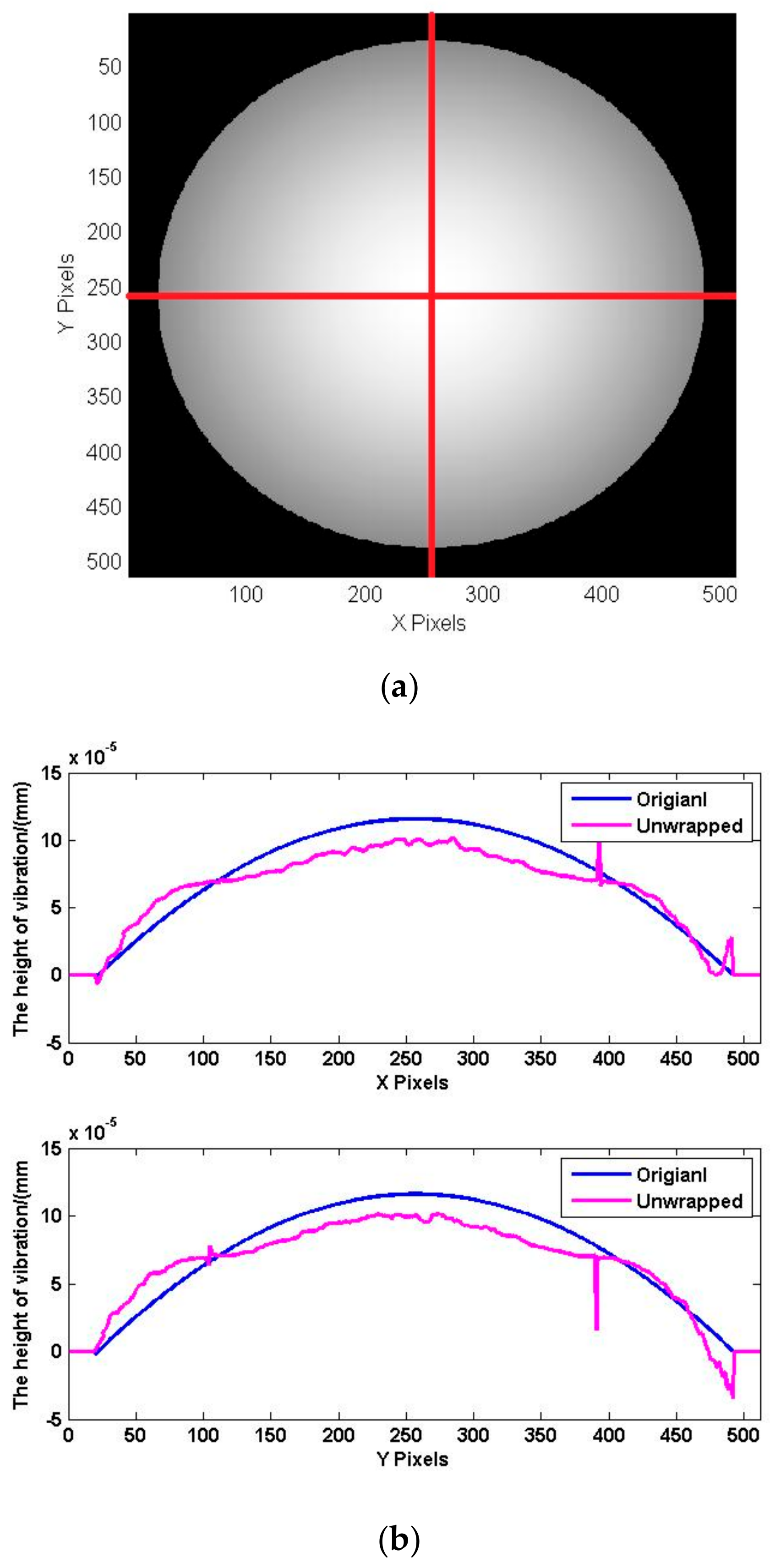
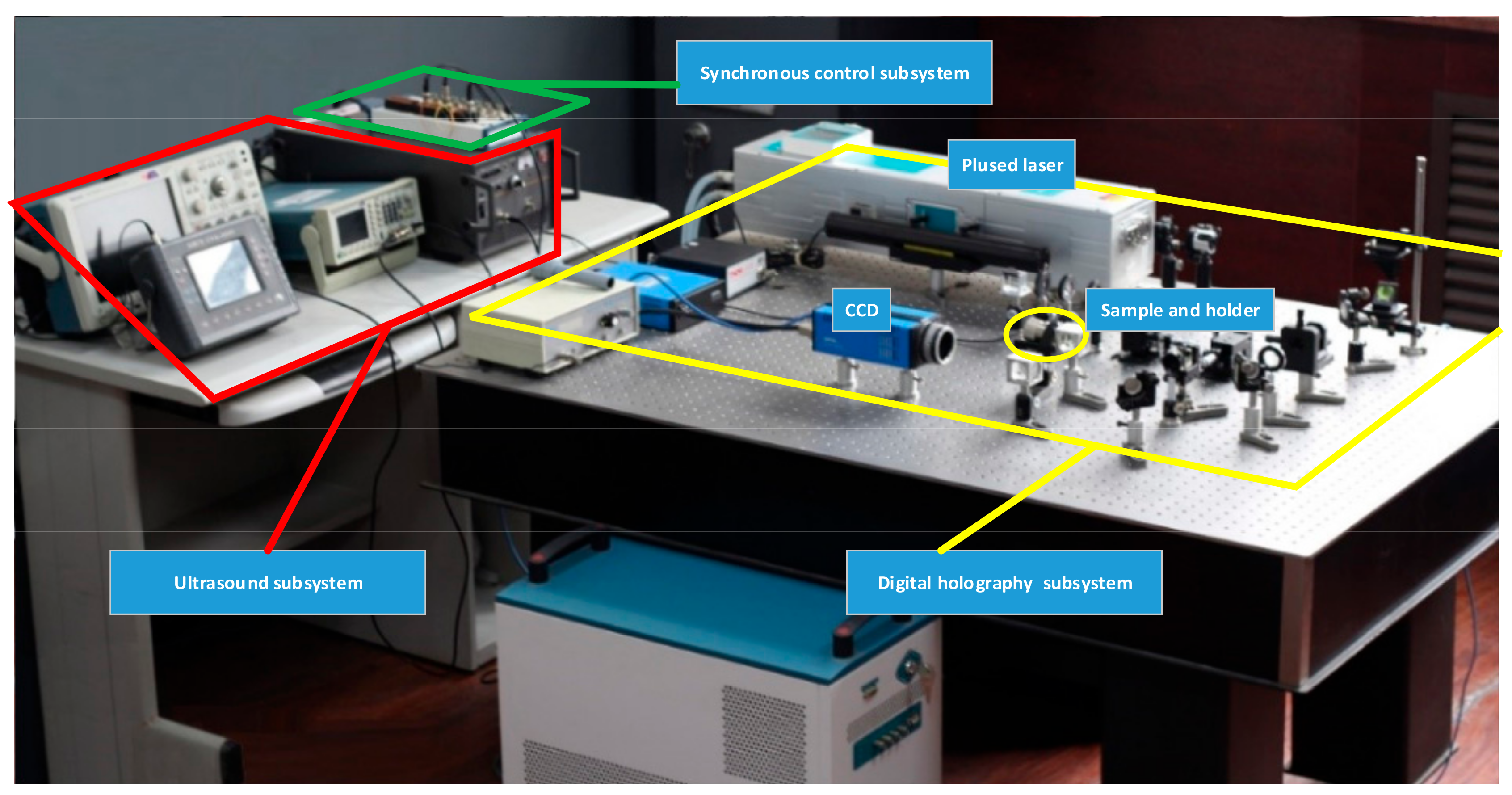
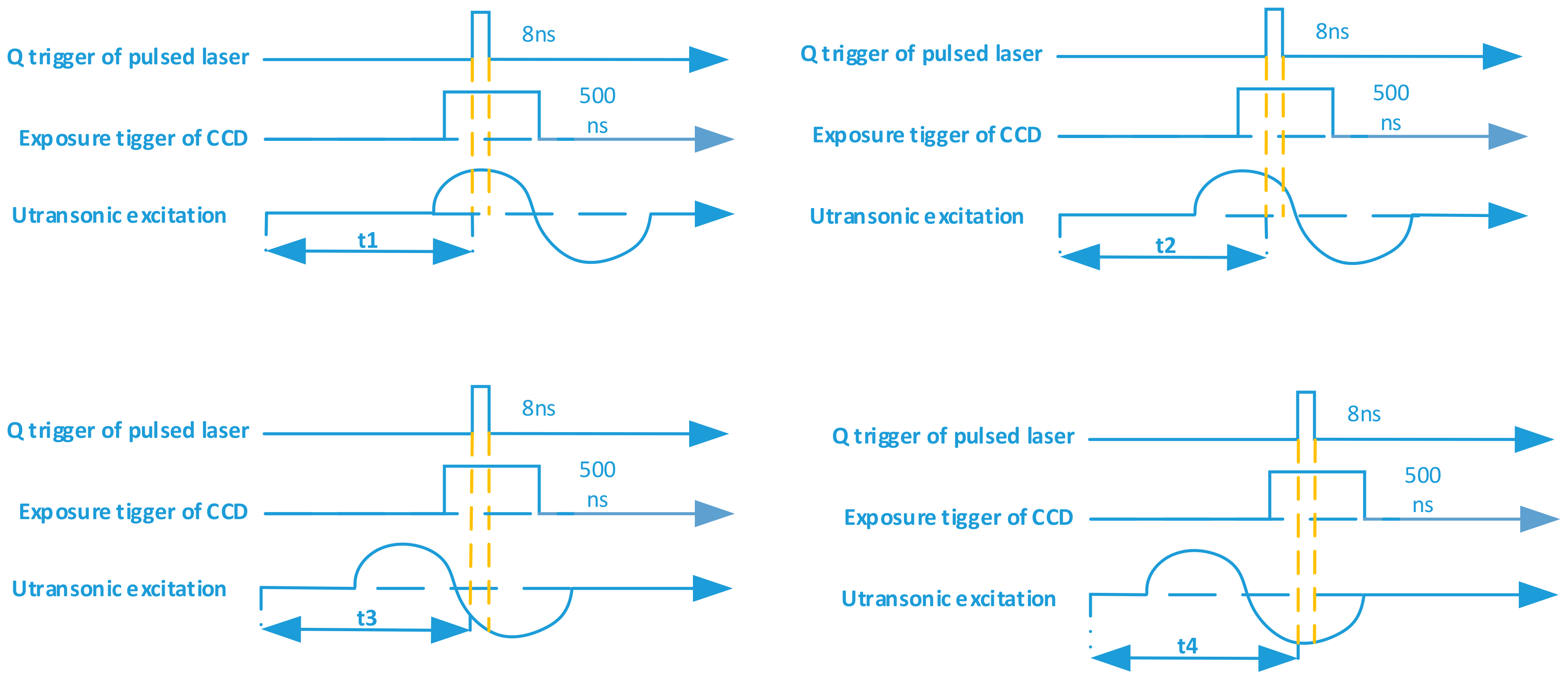
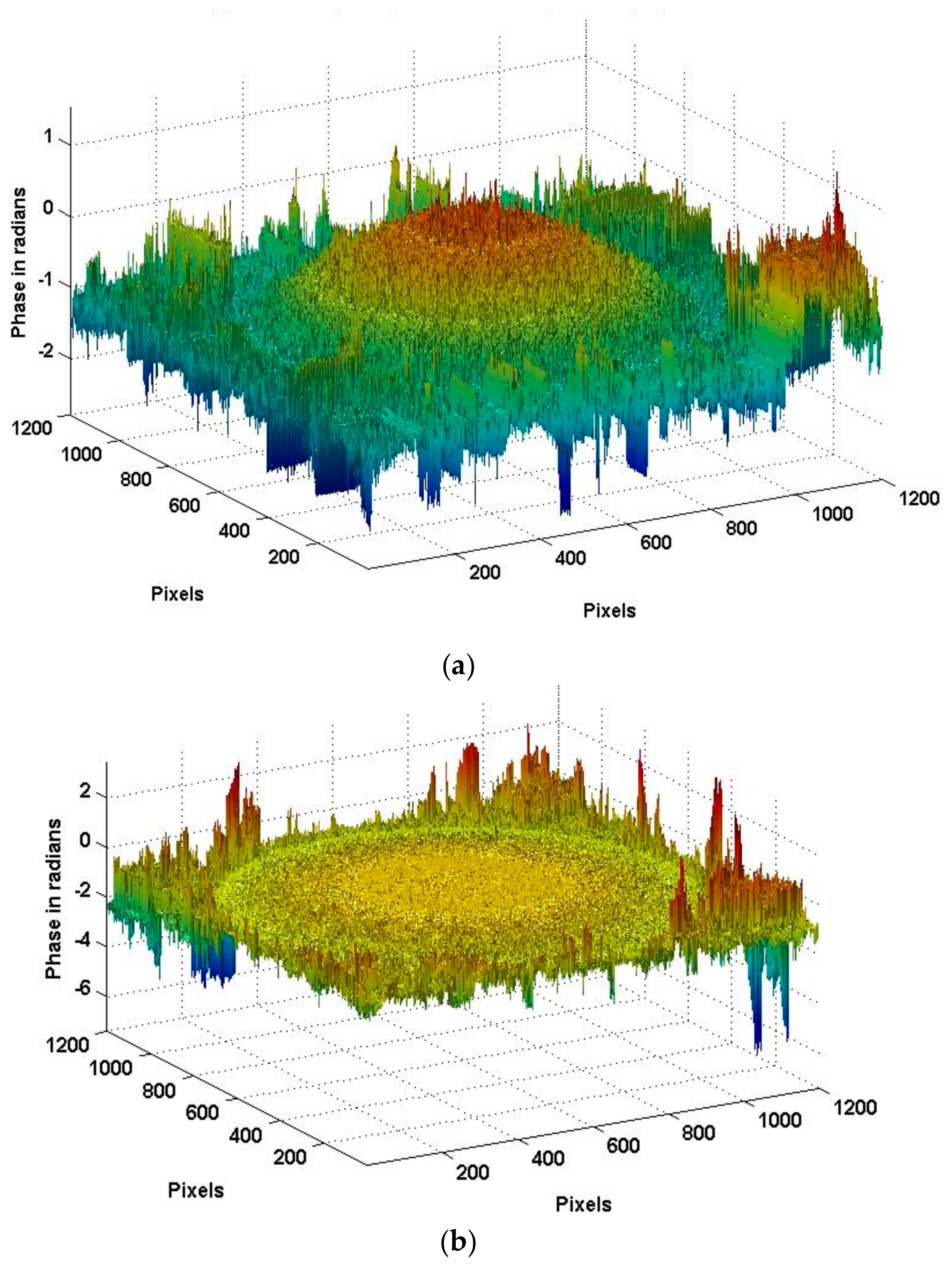
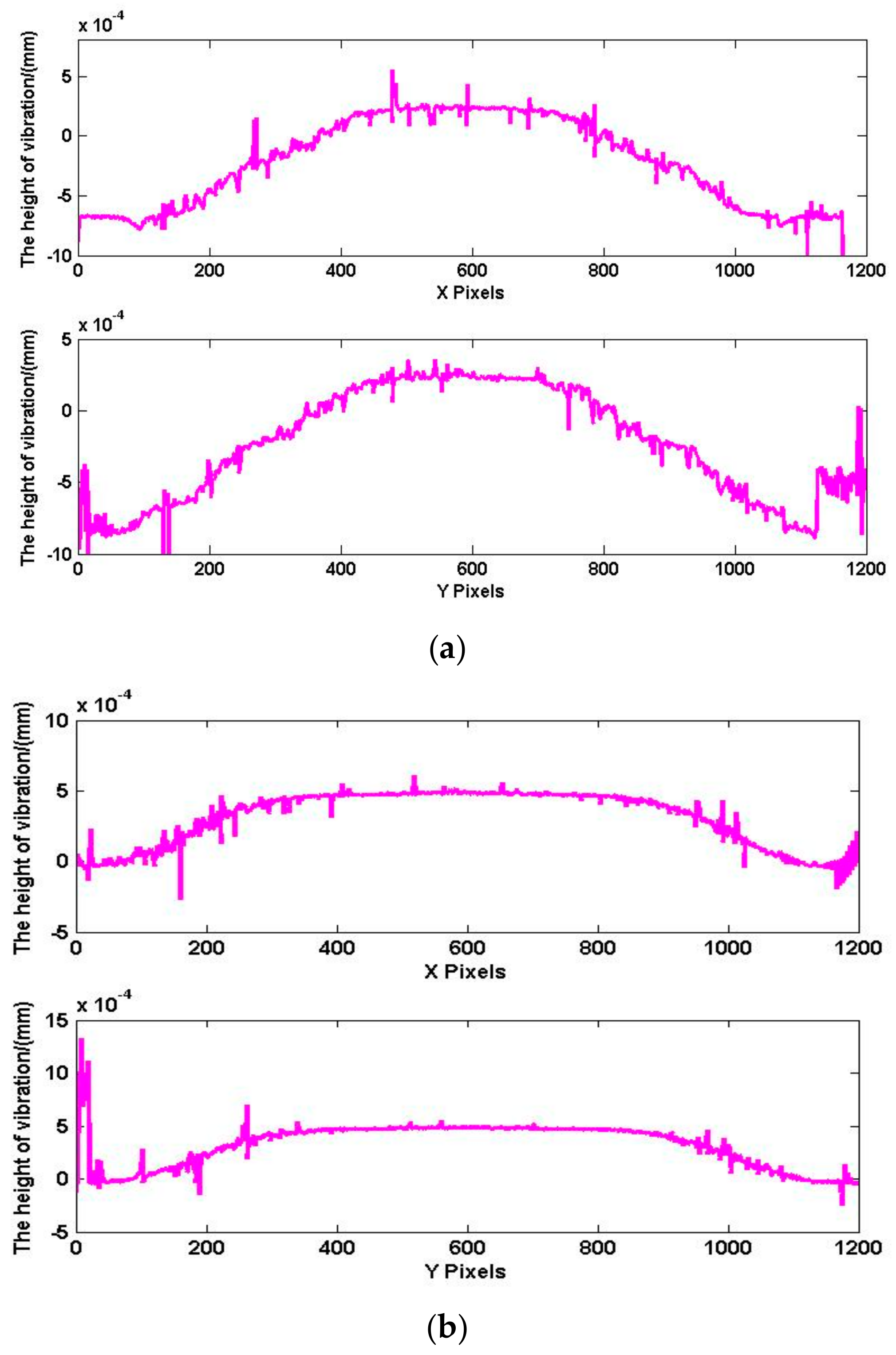

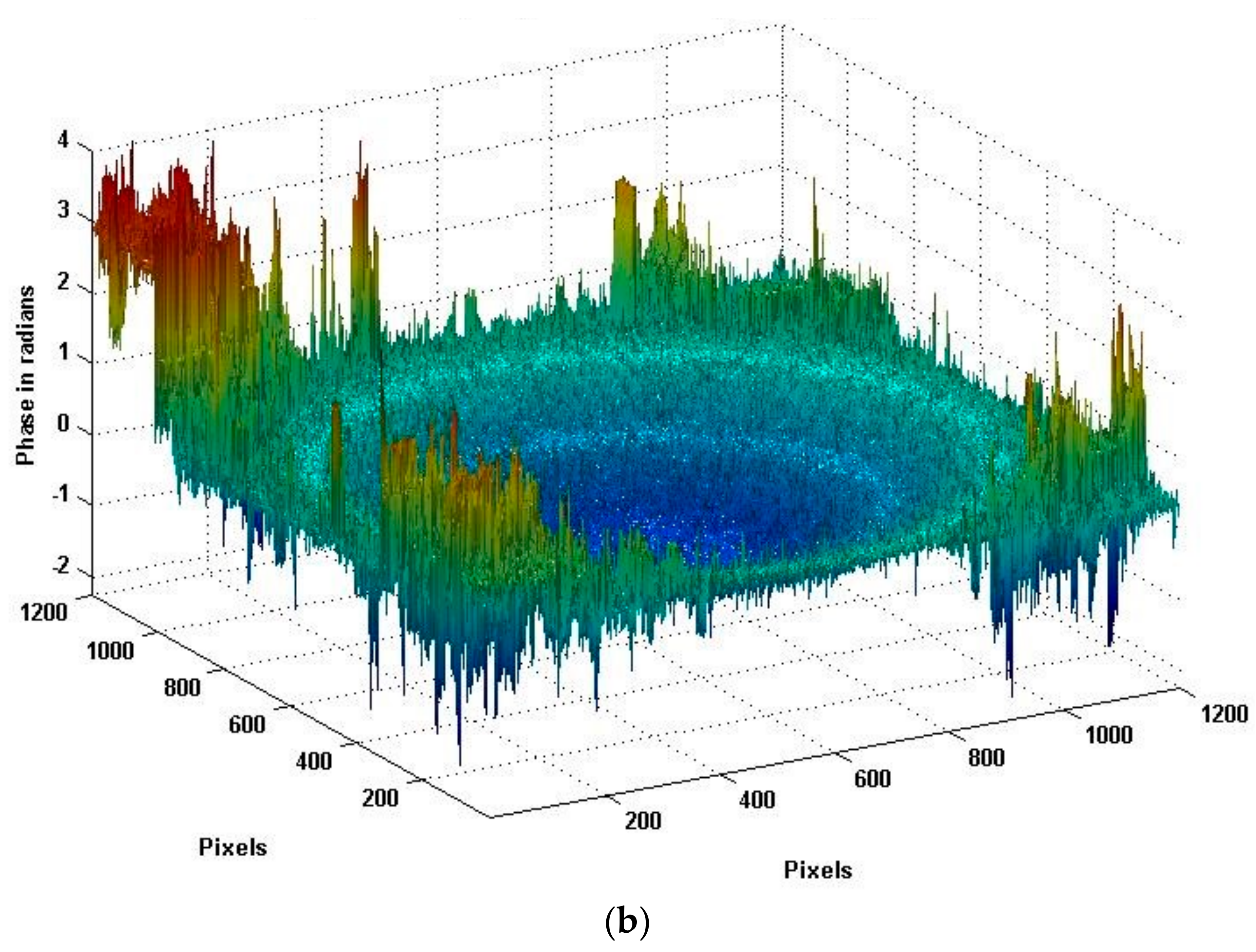

© 2018 by the authors. Licensee MDPI, Basel, Switzerland. This article is an open access article distributed under the terms and conditions of the Creative Commons Attribution (CC BY) license (http://creativecommons.org/licenses/by/4.0/).
Share and Cite
Wang, X.; Zhang, G.-M.; Ma, H.; Zhang, Y.; Wang, D. Measurement of a 3D Ultrasonic Wavefield Using Pulsed Laser Holographic Microscopy for Ultrasonic Nondestructive Evaluation. Sensors 2018, 18, 573. https://doi.org/10.3390/s18020573
Wang X, Zhang G-M, Ma H, Zhang Y, Wang D. Measurement of a 3D Ultrasonic Wavefield Using Pulsed Laser Holographic Microscopy for Ultrasonic Nondestructive Evaluation. Sensors. 2018; 18(2):573. https://doi.org/10.3390/s18020573
Chicago/Turabian StyleWang, Xing, Guang-Ming Zhang, Hongwei Ma, Yishu Zhang, and Doudou Wang. 2018. "Measurement of a 3D Ultrasonic Wavefield Using Pulsed Laser Holographic Microscopy for Ultrasonic Nondestructive Evaluation" Sensors 18, no. 2: 573. https://doi.org/10.3390/s18020573



